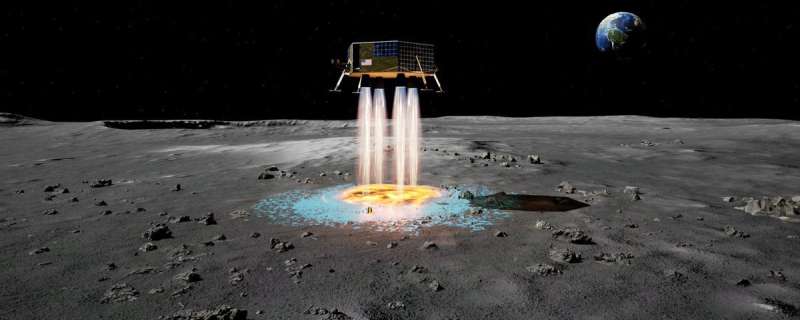A landing pad would lessen the impact of this dust and provide a more stable place for the landing itself.
But constructing such a landing pad the traditional way would be prohibitively expensive. Current estimates put the cost of building a lunar landing pad using traditional materials at approximately $120 million. Any such mission also suffers from a chicken and egg problem. How to get the materials to build the landing pad land in place if there is no landing pad, to begin with?
The technology Masten has developed is an ingenious solution to both of those problems. Depositing a landing pad while descending would allow spacefarers to have a landing pad in place before a spacecraft ever touches down there. It would also cost much less to install as all that is needed is a relatively simple additive to the rocket exhaust already being blasted into the surface.
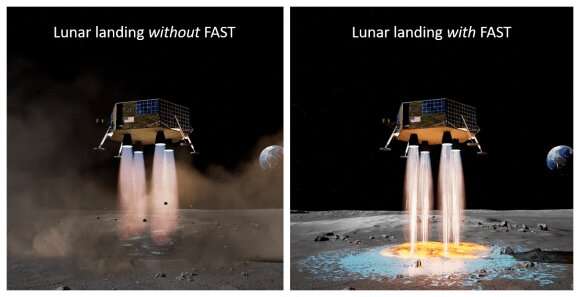
Masten's general idea is easy enough to understand. Adding solid pellets into the rocket exhaust would allow that material to partially liquefy and deposit onto the exhaust's blast zone, potentially hardening it to a point where dust is no longer a factor as it is encapsulated in a hard external shell. Masten believed it could find the right material to add to rocket exhaust to do exactly that.
Success or failure would come down to the physical properties of the additive pellets. Any additive with too much heat tolerance wouldn't melt appropriately in the rocket exhaust, essentially bombarding the surface with tiny bullets. On the other hand, any additive with too little heat tolerance could be completely melted by the rocket exhaust and vaporized into a useless cloud.
To find the perfect balance, Masten developed a two-tiered system, with relatively large (.5mm) alumina particles used to create a base layer of 1mm of melted lunar surface combined with alumina. Then, as the lander got closer to the base layer, the additive would switch to a .024mm alumina particle, which would deposit at 650 m/s onto the base layer and create a 6m diameter landing pad that would cool in 2.5 seconds.
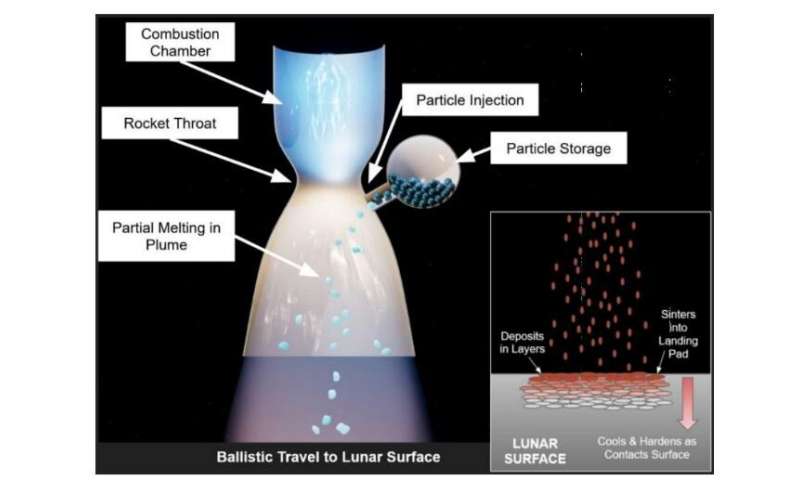
Graphic showing the whole system process of the FAST particle injector. Credit: Master Space Systems 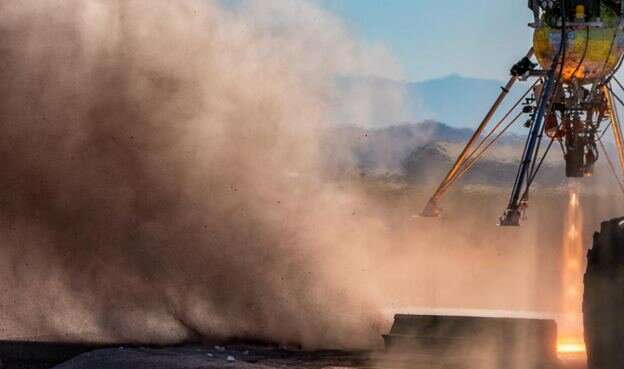
Example of how much dust can be kicked up even on Earth as one of Masten’s rockets is test fired. Credit: Masten Space Systems 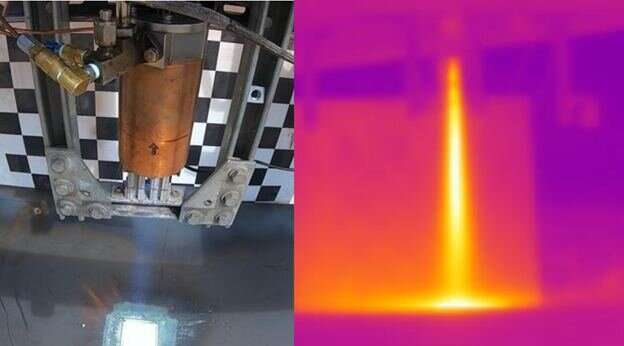
Example of the effects of an alumina plate, similar to what would be deposited on the moon’s surface in a fully scaled up system. An infrared image of the rocket exhaust can be seen to the right. Credit: Masten Space Systems
That all sounds like a pretty impressive idea, but it is still early days. Like many federal grants, the NIAC grant focused on developing this depositable landing pad idea takes a phased approach. Most of the Phase I, which has just been completed, focused on proving the idea is feasible, which Masten believes it is.
Feasible is not the same as functional, but that is precisely what NIAC grants are supposed to support—wild ideas that might just fundamentally change some aspect of space exploration. If Masten is correct and the approach is possible and can be scaled up, landing pads might be seen cropping up all over the lunar surface. And eventually all over Mars as well.
Explore further



